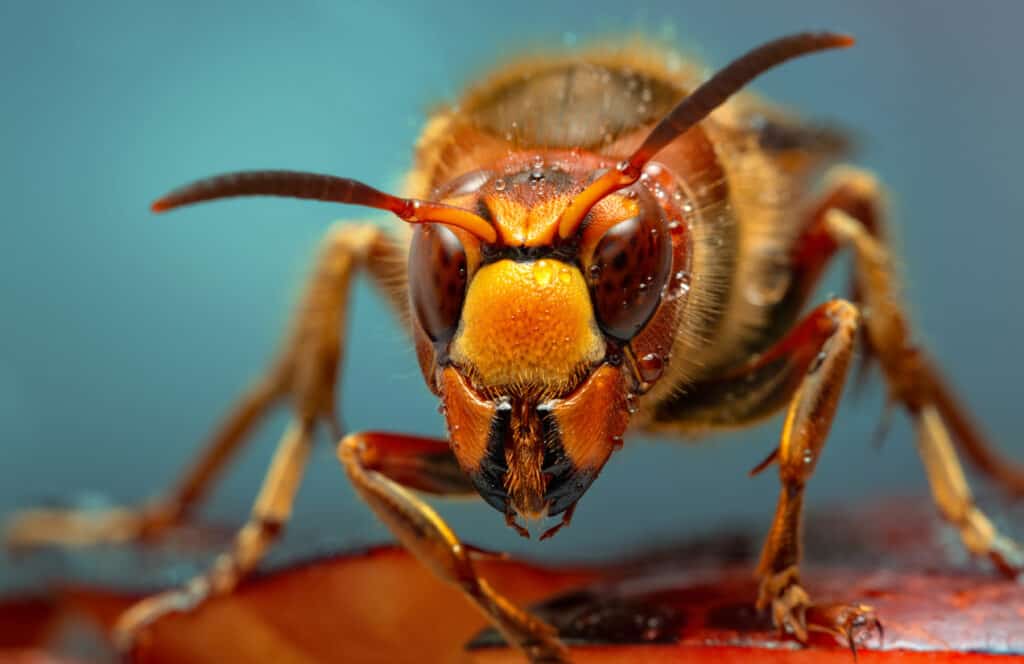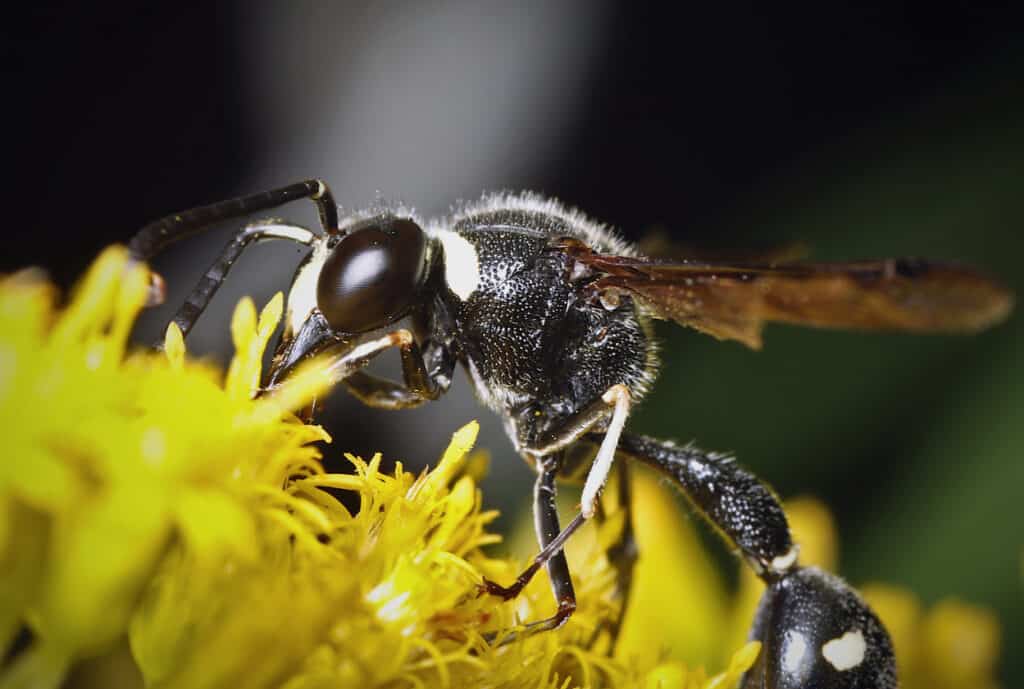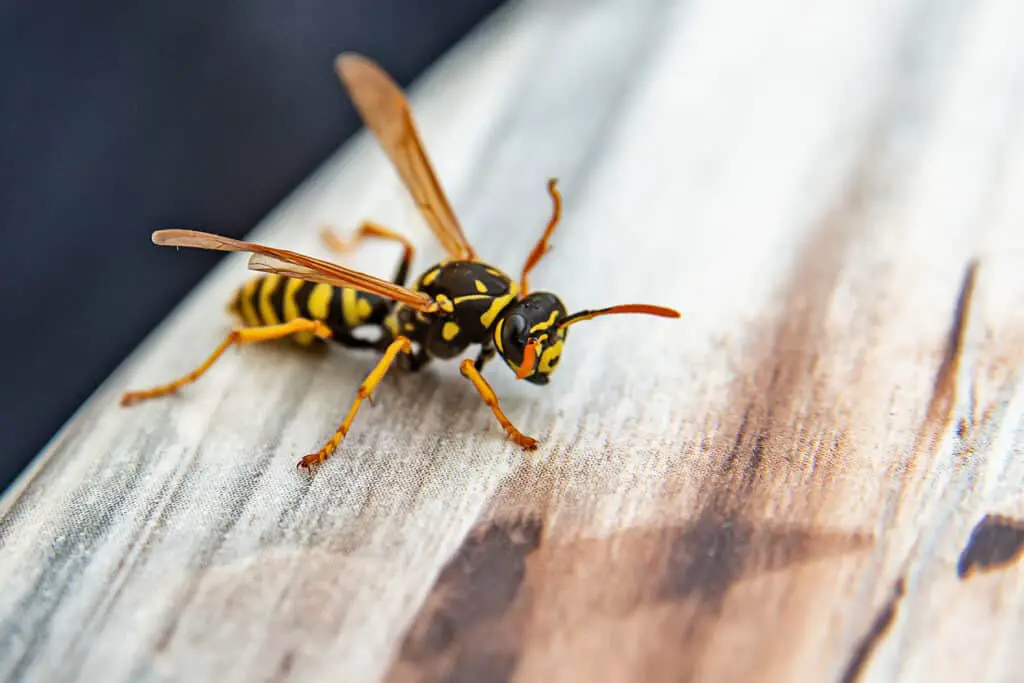For many years wasps have been seen as a nuisance and a threat because they can sting. However, farmers and gardeners have recently been more optimistic about these insects as they control the pests that eat away at crops and vegetables. Wasps will kill these pests as food for their young. It is great that these insects are helping the agricultural environment, so do wasps pollinate?
Wasps pollinate flowers in their search for nectar to eat and for insects on which to prey. Some wasps are generalist pollinators distributing pollen between various flowers. Other wasps are specialized wasps that are the plant’s only pollinator, like the tiny wasp that visits the fig tree.

Read on to learn why wasps are important pollinators, which flowers attract wasps, the mutualistic relationship between a tiny wasp and a fig tree, and why wasps need nectar and pollen. You can also read some interesting facts about wasps.
Wasps Are Important Pollinators

Wasps pollinate very similar to bees, except that they carry less pollen. Bees have more hair on their bodies, so more pollen will stick to them. And the bees transfer the pollen into baskets on their hind legs so they can carry more pollen. A wasp does not have this basket. But wasps as pollinators are just as effective as bees.
A Wasp’s Body Is Hairy

Wasps have hairy bodies, but the hair is very fine. The hair on their black and yellow abdomen is so fine it cannot be seen with the naked eye. One type of wasp might have more hair than another type. So the pollen does stick to the wasp!
Wasps Look Like Bees
Wasps look a lot like bees and are often mistaken for bees. But wasps have a slender waistline, whereas the bee’s abdomen is chubbier. Wasps have slim and dangling legs, while a bee’s legs are stout. A Wasp has a distinct yellow and black band around its abdomen, whereas bees have a brown-yellow coloring.
What Makes Wasps Important Pollinators?
Wasps will visit flowers, searching for nectar and insects on which to prey. They often share flowers with bees, flies, and butterflies. Some gardeners might see them as insects that steal the nectar from the blooms and have no other use. But scientists have now proven that wasps are very effective pollinators.
Some wasps will transfer the pollen from various plants while feeding on the nectar. These wasps are known as generalist pollinators. While other wasps are more selective in their choice of blooms and will frequent one or just a few types of plants. They are specialist pollinators.
Why Are Wasps Specialist Pollinators?
Specialist pollinator wasps are selective in the plants they frequent and will choose one or a few types of plants to collect nectar and pollen. The choice of a plant usually depends on one of two things, the closeness to the wasp’s nest or the wasp is attracted to a particular plant. The plant will only rely on the wasp for reproduction.
The Types Of Flowers That Attract Wasps
Wasps can see UV light and are primarily attracted to strongly scented white- or yellow-colored flowers. Because they have short mouthparts, wasps favor shallow flowers where the nectar can easily be accessed.
A plant that is frequented and favored by wasps is from the orchid family. Flowers from the orchid family have an abundance of nectar, and the wasps are usually the only pollinator. There are at least 100 species of orchids that are solely reliant on wasps for pollination.
The Beneficial Relationship Of A Wasp And The Fig Plant
There are two types of figs native to the U.S, the Florida Strangler Fig and the Shortleaf Fig. These fig trees require the services of wasps for pollination. These wasps are very tiny and are only known by their scientific names. The Florida Strangler Fig is visited by the Pegoscapus mexicanus wasp and the Shortleaf fig by the Pegoscapus tonduzi wasp.
The fig plant and the tiny female wasp depend on each other for reproduction. Figs have tiny flowers inside the fruit. When these flowers are ready for pollination, the fig will emit an enticing aroma that will attract the female wasp.
Once the wasp has located the fig, she will find a small opening at the end of the fig and push herself into it. This opening is very tight, and even though she is tiny, she usually loses her wings and antennae as she moves down the passage.
She lays her eggs on the tiny flowers and, at the same time, spreads the pollen she has collected from the fig in which she was born. This pollen transfer allows all the seeds in the fig fruit to grow. These are the crunch grains found in figs that we eat. After the female wasp lays eggs, she will die inside the fig, and the fig fruit will digest her body.
Once the eggs have hatched, the young females mate with the males. Usually, only about 5% of the young are born male. These males are born with poor eyesight and no wings. They will chew a way out of the fig for the females, and then they will die inside the fig. The female fig produces an enzyme that will digest the wasp completely.
The young female wasps will collect pollen from the tiny flowers, exit the fruit before it is completely ripe, and then fly away in search of a new fig tree to lay their eggs. A unique mutual relationship and continual life cycle. The wasp carries pollen to the fig for the seeds to grow, and at the same time, the fig provides a haven for the wasp’s offspring.
Pollen Wasps Feed Their Brood Nectar And Pollen
Pollen wasps (Masarinae) provide their young with nectar and pollen. The females use their mouthparts to collect the nectar and pollen and to construct their nests. These wasps feed solely on nectar and pollen and are also known as ‘vegetarian’ wasps.
Pollen wasps are the only wasps that feed on pollen and nectar and do not include insects in their diet like other wasps. There are 300 species of these wasps, and they are found worldwide. Their coloring is brown or black with red, white, and yellow patterns.
Of all the wasp species, the pollen wasp is most like bees. Instead of short mouthparts like other wasps, their mouthparts are longer and can reach deep within plants to find nectar. These wasps don’t have pollen baskets like the bees, but their digestive tract can expand to store the pollen and nectar. So, they carry the pollen in their crops.
Pollen wasps are known to forage on specific plants like beardtongues, borage, and tansies. These wasps play an essential role in pollinating these plants.
Why Do Wasps Need Nectar And Pollen?
Wasps are carnivores, so they want to drink the nectar from the flower blossoms and are not interested in the pollen as a source of protein. Yet, some species of wasps are pollen vectors and play a vital role as specialist pollinators.
Some wasps have evolved with time and have changed from a carnivorous diet to a complete plant-based way of life. These are the wasps with the same dietary needs as bees. Instead of providing animal material for their nests, they now collect pollen and nectar to feed their young.
A Wasps Food Requirements
Wasps must supplement their diet with sugar and water, even those that mostly eat animal-based material. This dietary requirement often can be found in nectar or the honeydew produced by insect herbivores such as aphids.
Like bees, the wasps need energy-level food for their high-level metabolism, which nectar provides. That is why you often see wasps feeding on fruits like apples, pears, blackberries, and figs. Occasionally you might notice wasps swarming picnic plates and garbage cans. This is because some wasps will consume some food humans eat (fruit juice, jams, fruit pies).
The carnivorous wasps will prey on insects, including herbivores, that eat our crops. Wasps will also use their stingers to capture insects or spiders to feed their larvae.
FAQ Regarding Wasps And Pollination
Below are a few questions that are frequently asked about pollinating wasps.
Do Wasps Pollinate Vegetables?
Wasps do not pollinate vegetables as they collect the sweet nectar found in flowers. But many species of wasps are good to have in your vegetable gardens. Tiny parasitic wasps like braconid wasps do not sting or build nests but eat pests that are harmful to your plants.
They will eliminate caterpillars, leaf skeletonizes, pecan casebearers, and other pests. They get rid of hornworms that are found on tomatoes.
Are Wasps Closely Related To Bees?
Wasps and bees are from the same order of insects, Hymenoptera. Most wasps belong to a group called the Aculeata, which has a defining feature: to sting. The Aculeata group of insects, like the wasp, are mainly predators.
During Pollination, Do Wasps Do Pest Control?
Wasps prey upon many insects, for food or as a host for their larvae. A study conducted in Brazil proved that wasps effectively managed and controlled pests in sugarcane and maize crops. But there is a caveat to this pest control. Wasps, being predators, may hunt other pollinators and other predators that also help to control pests.
Thousands of braconid species in North America are most beneficial to vegetable gardens. Other wasps like paper and red wasps, which sting, also get rid of pests by feeding them to their young.
Do Wasps Make Honey?
There is only one species of wasp called the honey wasp (Brachygastra), which collect and store nectar as a type of honey. Other wasps drink the sweet nectar and feed it to their brood.
Do Wasps Buzz When They Are Pollinating Flowers
Wasps will buzz when they are building their nests. If you cannot see a nest, but there is continual loud buzzing, it means that a wasp nest is hidden nearby. Wasps will also make buzzing noises when they fly due to their set of wings continuously flapping.
How To Recognize A Wasp Nest?
Unlike bees which create wax to use in their hive, wasps make their nests from a paper-like substance formed by chewing wood bark. They will make their nests in the eaves of a roof or an old building.
Their nests will be grey in color and will resemble an uneven ball-like shape. The pattern on the outside will be a coiling swirl-like structure, and the texture will be dry and papery like a Papier-Mache mold. Inside the nest will be a honeycomb pattern.
Are Wasps Very Aggressive?
Wasps are not aggressive when foraging in flowers, plants, or trash cans. Always remain calm and avoid making aggressive movements towards them. However, they can become aggressive if they are protecting their nests. If a nest is on the eave or roof of your home, it is best to call the professionals to remove it.
Conclusion
Although wasps are perceived as being just pests that sting, they are, in fact, efficient pollinators. Wasps love to drink the sweet nectar from flowers and will visit various blooms in search of this delicacy. They will also hunt insects found on plants and flowers and, in this way, will spread the pollen they collect on their journey.
Wasps have very fine hairs on their body to which pollen does cling, but they do not have baskets to carry the pollen as bees do. Thus, they do not take as much pollen as bees. Some wasps, known as specialist pollinators, favor one type of flower and will exclusively be that plant’s pollinator. Wasps, in their search for nectar, will get rid of pests that are found on flowers and plants.
A particular tiny female wasp has a special relationship with a fig tree’s fruit. This wasp will lay eggs, and her young will hatch inside the fruit. In the process, she will pollinate the fruit seeds with pollen she has gathered from the fig in which she was born. A most beneficial relationship in which the reproductive cycle of this tiny wasp and the fruit of the fig tree is preserved.
References
http://blog.umd.edu/agronomynews/2020/08/31/wasps-surprisingly-cool-pollinators/
https://www.fs.fed.us/wildflowers/pollinators/pollinator-of-the-month/fig_wasp.shtml

